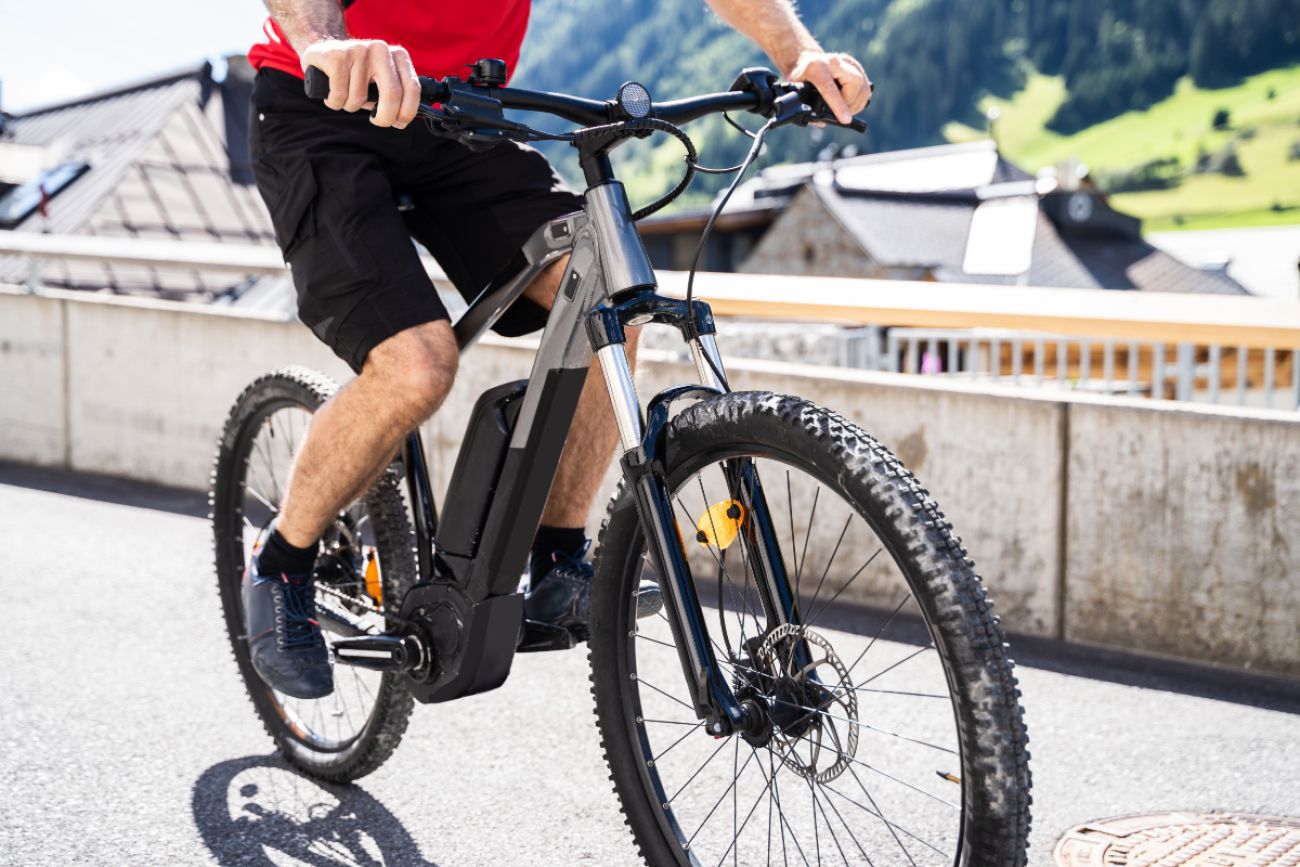Michigan officials mull more access for e-bikes on state trails

- A Michigan DNR proposal would open some dirt and paved state bike trails to e-bikes
- The policy would allow e-bike riders to enjoy the same trails other bikers do
- Officials say there’s no evidence that e-bikes damage bike trails but concerns linger
Electric bicycle use is expanding, welcoming a new group of riders to the bicyclist community. But under current Michigan state park policies, the bikes are banned from many trails.
That could soon change.
The Michigan Department of Natural Resources has proposed a yearlong pilot program that would open 3,000 miles of trails to e-bikes.
The change could take effect as early as July.
It has divided the biking community, with some lauding it as a positive change that prioritizes people who may be unwilling or physically unable to ride a pedal-powered bicycle, while others fear e-bike riders will damage and overcrowd trails.
Electric bike classification
- Class 1: Pedal-assist only, maximum speed of 20 miles per hour, limited to 750 watts or less
- Class 2: Pedal-assist and throttle-assist, maximum speed of 20 miles per hour, limited to 750 watts or less
- Class 3: Pedal-assist only, maximum speed of 28 miles per hour, limited to 750 watts or less
RELATED:
- Michigan Senate bill would enforce an e-bike speed limit on Mackinac Island
- Michigan Dems OK $3M for e-bike discounts. GOP says plan is off the rails
- Five reasons why Michigan deer herds are surging: hunting declines are just one
“A lot of folks are very worried about what they’ve grown to love and fought for and helped build over the last 30 to 35 years here in Michigan is going to get eroded and taken away by this whole new user group,” said Neal Glazebrook, events director for the League of Michigan Bicyclists.
The proposed policy would replace an existing one under which Class 1 e-bikes, which are pedal-assisted and top out at 20 miles per hour, are allowed on paved or crushed limestone trails, while e-bikes of all stripes are allowed on DNR-managed roads, bike lanes and motorized natural trails like ORV trails.
That left out thousands of miles of natural-surface trails, such mountain-biking trails. The new policy would open those to all Class 1 e-bikes, and Class 2 bikes with a use permit.
Such trails would remain off-limits to Class 3 bikes, which reach top speeds of 28 miles per hour.
“We’re constantly looking at ways to make improvements to our programs, so in the parks and recreation division we have an obligation to make sure that our facilities and our programs are open and available to all individuals, regardless of their abilities,” said Nicole Hunt, regulatory unit manager with the DNR.
Hunt said research in other states has shown that e-bikes cause no more damage to public trails than regular pedal bikes.
States like Arkansas and North Carolina, both of which have active mountain biking communities, have opened their trails to e-bike users, and “no one’s really seeing the negative impacts that everyone’s worried about,” said Glazebrook.
During a meeting Thursday of the Michigan Natural Resources Commission, Hunt shared results of a DNR public opinion survey about the proposed policy. Of 6,000 respondents, 54% supported the policy change and 41% opposed.
If the proposal is enacted, signage indicating e-bike use will be placed at trailheads, along with a QR code where people can give feedback. That way, if an issue arises, Hunt said, it can be addressed and corrected.
To those opposed, Glazebrook said to give the policy a chance.
“There’s this big fear that all the elite athletes in the state go buy e-bikes and ride at 30 miles an hour around the trails. That’s not who I see using these bikes,” he said. “I see people with MS, with heart conditions, folks that maybe had both their hips and knees replaced… this is just a little assistance to keep them active.”
Michigan Environment Watch
Michigan Environment Watch examines how public policy, industry, and other factors interact with the state’s trove of natural resources.
- See full coverage
- Subscribe
- Share tips and questions with Bridge environment reporter Kelly House
Michigan Environment Watch is made possible by generous financial support from:
Our generous Environment Watch underwriters encourage Bridge Michigan readers to also support civic journalism by becoming Bridge members. Please consider joining today.
See what new members are saying about why they donated to Bridge Michigan:
- “In order for this information to be accurate and unbiased it must be underwritten by its readers, not by special interests.” - Larry S.
- “Not many other media sources report on the topics Bridge does.” - Susan B.
- “Your journalism is outstanding and rare these days.” - Mark S.
If you want to ensure the future of nonpartisan, nonprofit Michigan journalism, please become a member today. You, too, will be asked why you donated and maybe we'll feature your quote next time!






